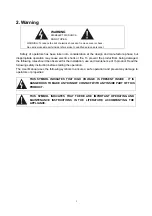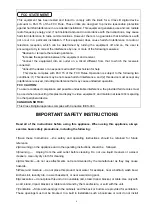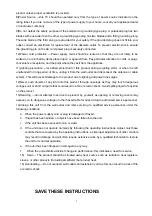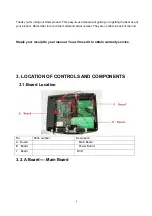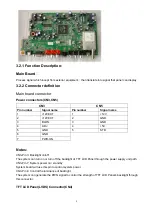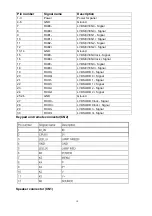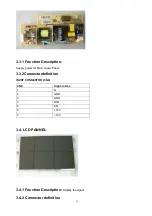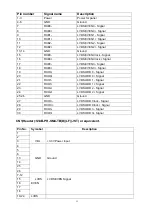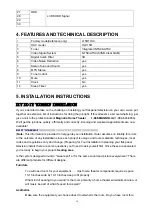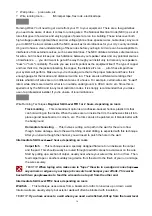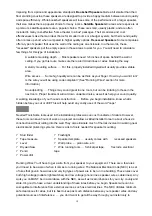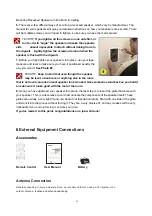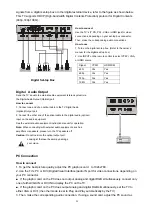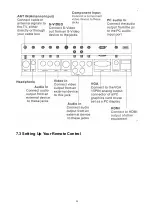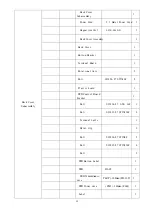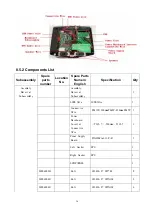
19
discover your speakers "buzz" or "hum" constantly. The wire you use is as important as the speaker
and amplifier themselves. The type of copper and how thick it is, the jacket protecting the copper, the
distance it's run
—
all of these impact how your system will perform. Make sure you're choosing wire
that is the proper material and has a thick enough gauge for the location and distance it will be
run.There are also different wire ratings that dictate what kind of wires are run within different areas of a
house. For example, certain wires are "in-wall" rated, while others are rated for what can be run outside,
underground, in HVAC ducts, etc. Since this is spelled out by the NEC and in any local restrictions
codes, it is strongly recommended that you make use of a professional installer if you're unsure of local
ordinances.
Wire Running Technique
Carpet fish
—
This technique uses a specially designed flat wire to run between the carpet
and the pad. This should usually be routed through low-traffic areas to avoid wear on the wire.
Start by pulling up a section of carpet, usually near where your wire will be run to or from. Feed
carpet tape or another suitably long device from the start to the finish of your run, and tape the
wire securely.
TECHTIP:
When taping wire, make sure to "taper" the wire in a wedge or cone shape
—
any corners or edges on your tape job can catch and hamper your efforts. This works
best with two people
—
one to feed the wire, and one to pull from the other end.
Wall fish
—
This technique uses access from a basement or attic to run wires up or down a wall.
Interior walls are usually empty, but exterior walls will often be blocked with insulation.
TECHTIP:
If you have access to a wall where you need a wire fished, drill up from the
lower level or down from an upper level into the center of the wall. Once you have an
access hole drilled, run your wire fish tool, such as a flex rod, down to where you need the wire
run. Tape your wire and feed it through the wall to your desired location.
Track molding
—
This concealment option is an adhesive-backed, hollow, plastic trim that can
hold wiring on the inside. When the wires are run inside the trim, the adhesive sticks it into place
against baseboards, in corners, etc. The trim can also be painted, so it blends better with the
background.
Mounting an On-Wall Speaker
Beginner Skill Level
—
30 to 60 minutes1.
Most on-wall speakers will
have a very straightforward mounting process. If they can be wall mounted, they will have a small hole
on the back or an insert for attaching a mount. Measure where this hole is on the speaker and pick your
desired height.
2.
When you have located the height for your speaker, use your stud finder to locate a
stud to hang your speaker from.
TECHTIP:
Most stud finders work the same
—
simply hold the stud finder still against
the surface and then hold down the button. It will then beep. Now move it slowly straight
up and down, or to the left and right until it indicates it senses something
—
usually by blinking
or beeping in a different manner..
Mark the location and attach your screw or mount.
3.
If a stud can not be located, drywall anchors can
sometimes be used to hang a speaker from the wall
—
it depends on the weight of the speaker. Check
Summary of Contents for HLC15R - 15" LCD TV
Page 1: ...1 HLC15R TV 8888 128 ...
Page 3: ...3 12 3 Main board failure check 44 12 4 Pannel failure 44 12 MAINTENANCE 47 ...
Page 27: ...27 7 2 Back panel controls ...
Page 28: ...28 7 3 Setting Up Your Remote Control ...
Page 29: ...29 ...
Page 39: ...39 9 6 Backlight Backlight adjust the backlight 9 7 Function Burning Mode ...
Page 56: ...42 11 WIRING CONNECTION DIAGRAM ...
Page 62: ...48 Sincere Forever ...

